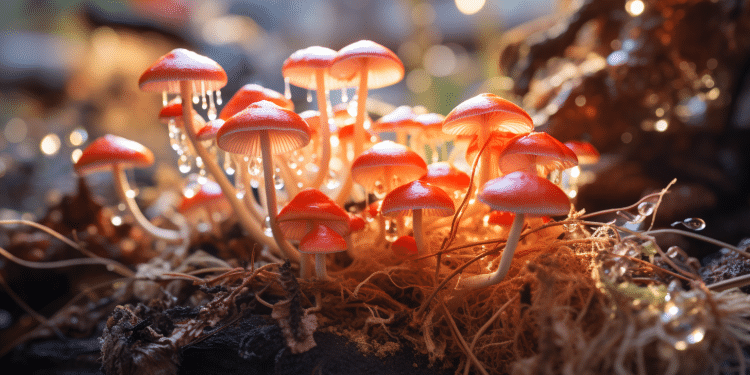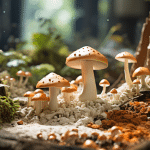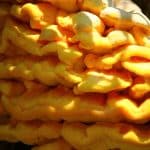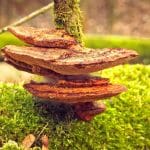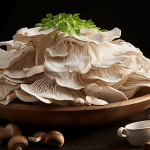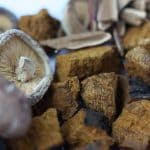To produce quality mushrooms on a consistent basis, a grower needs to set up the chambers where mushrooms are grown, as well as providing them with ideal conditions to grow in.
You need to build a space that has the humidity and CO2 levels, temperatures, and light levels the mushrooms like. To achieve that, fungi grow rooms utilize fans, humidifiers, heating units, and walls that are capable of holding in the moisture.
By the end of this article, you know what a mushroom fruiting chamber is. We will explain how to build and use one in a separate article. You will find out which conditions are ideal for fruiting mushrooms, as well as the usual problems that growers can encounter.
What does a mushroom fruiting chamber do?
A mushroom fruiting chamber is a enclosed space used by the grower to simulate conditions and environments in which the various species of mushrooms normally thrive, this helps mushrooms to thrive. A fruiting chamber creates specific conditions for fungi, that would cause them naturally to begin producing mushrooms from their own mycelium.
Learn more: Mushroom extract vs powder
Different mushrooms will require different requirements. So, the design and characteristics of your mushroom fruiting chamber will differ depending on the type of mushrooms that you are trying to grow.
Types of Mushroom Fruiting Chambers
Monotub
For smaller-scale growers, one of the more common types of mushroom fruiting chambers is called the monotub.
This is where a large plastic container is partially filled with substrate, and has holes cut into the sides to allow for ventilation. This is a pretty basic set-it-and-forget-it room for beginners. However, the smaller size of a single tub is impractical for commercial growers, or for anyone growing mushrooms at scale. A shotgun-style mushroom chamber is pretty much like a monotub, as well as being a big plastic container.
Shotgun Fruiting Chamber
However, the shotgun fruiting chamber is the preferred choice if you are growing mushrooms that sprout from the package, such as oyster mushrooms or shiitake mushrooms. For this method, you will fill the bottom of the chamber with perlite, then put your growing bag over the top.
Learn more: Mushroom grow bags
Martha Fruiting Chamber
The Martha fruiting chamber is composed of a series of shelves covered in a sheet of plastic, and, just like the monotub, is only a good choice if you are looking to grow mushrooms on a smaller scale.
Hydroponics Tent
A hydroponic grow tent is an excellent option for folks just starting out who want to grow mushrooms at a larger scale than what they can do in either the monotub or a Martha grow room.
Wood Frame with Plastic Sheeting
You can build a wooden frame out of 2×4’s and cover it in plastic sheets as the walls. If you choose to go with this approach, remember plastic sheeting is harder to clean than rigid walls due to the give and flexibility in the walls.
Fridge Panel Grow Room
You could make a cooled-down, fridge panel insulated grow room, as we did in our urban mushroom garden.
Shipping Container Grow Room
You can even repurpose refrigerated shipping containers to make great mushroom fruiting chambers.
Most commercial mushroom grow rooms are created out of tents, trailers, or even whole rooms. A mushroom fruiting chamber does not have to be hi-tech. No matter the scale or dimensions that you are working with, you want your fruiting chamber to be a clean, controlled space.
It does not have to be sterile, but you should design it so that cleaning is a breeze. It should be cleaned regularly so that contaminants such as mold are kept at a minimum. If you are planning on selling your mushrooms, you will want to make sure that it does not become infected with any other types of bacteria or fungus.
Mushroom growing rooms are also extremely dank places that have a lot of humidity. It is strongly recommended to setup the chambers on concrete floors with drainage near. Dampness over time can destroy wood, drywall, carpet, and most other ordinary construction materials. You will also want to have some sort of means to drain the air from your grow room and to introduce fresh air.
Ideal Mushroom Fruiting Chamber Growing Environment
There are four basic parameters that you will want to monitor in your mushroom fruiting chamber in order to ensure that your mushrooms produce fruit consistently.
Low CO2 Content
While the mushroom sprout is setting in the substrate, you will need high CO2 (carbon dioxide) levels. That is why we package it in bags and containers with an airtight seal, as well as helping keep it free of contaminants.
However, when the time comes for mushrooms to spawn, they require low levels of CO2 in the air. Mushrooms take in oxygen and exhale CO2. So they are really closer to animals than plants, in this respect! You can measure CO2 levels using relatively cheap meters.
Humidity
Mushrooms prefer to grow in wet environments.
They can grow year-round. However, in the wild, most mushrooms thrive in cool, moist days during autumn. They usually begin life beneath heaps of damp leaves. Mushrooms are made up of 92% water. We wanted to provide them with a welcoming environment for their growth.
Keeping your grow room humidity at 80+ percent is recommended. This will help keep your mushrooms from drying out.
Lighting
Mushrooms require a certain amount of light, which is a sign it is time to cultivate.
Although mushrooms don’t use photosynthesis the way plants do, in the wild, they actually do grow towards the sun. You are going to have to get the balance just right, though. A bit of a little bit of heat is all that will be needed for your mushrooms. If light is too intense, it could make your mushrooms dry out or stunt growth. In our mushroom fruiting chamber, we like to keep just enough light so that we can see what we are doing, as well as to read and take notes.
Temperature
Just like plants and animals, fungi have a certain temperature range in which they will flourish. Fungi prefer temperatures that are quite cold. Again, we are trying to emulate their natural surroundings in the midst of a cloudy fall day. The temperature requirements for the Mushroom Fruiting Chambers will differ slightly among the various species.
However, between 60-65F (15.5C-18C) is a safe range.
Some types of mushrooms, such as oyster mushrooms or shiitake mushrooms, are especially hardy and will grow at most temperatures. We have seen them fruit successfully on days where the weather is snowing outside, and during the heat of the summer, up to 86F (30C), so if your growing room is slightly warmer than the recommended ranges above, you should probably have good mushrooms. However, if you are having problems, you might want to try to fix them by turning down the temperature. Warmer temperatures can help mushrooms grow faster, but they can also increase your risk of contaminants. In cooler temperatures, we found that mushrooms grew slightly slower, but produced larger mushrooms overall.
How Long Does it Take for Mushrooms to Grow?
The whole mushroom growing process, from adding the starter fungus to your growing environment to harvesting, takes about one month. The colonization phase takes approximately two weeks, to allow mycelium to spread completely throughout a growing medium. This is a stage that occurs in warm temperatures, with high humidity, and with a high level of CO2.
You will know that your mushroom sprouts are fully colonized when the surface is fully covered with a fuzzy white layer of mycelium. Once your mushroom bag is fully colonized, then it is time to transfer it into your mushroom growth chamber to produce a mushroom. Dramatically decreasing CO2 by opening or cutting holes into your bag will help to shock your mycelium to produce fruit, as well as giving your mushrooms a place to grow from. Once your bag of mushrooms is in a fruiting chamber, you can begin to see pips in just two to three days.
Oyster mushrooms and Lions Mane mushrooms will fully grow and be ready for harvesting in around 14 days. Other species, such as Shiitake, may take six weeks or longer to produce. After the first harvest, mushrooms will keep producing for another two to three times until nutrients are fully exhausted in the substrate. You can expect another mushroom flush in 10 days or so. However, the yield of each successive flush will be lower than that of the first.
Updated 10/3/2022
